The Serengeti National Park in Tanzania covers an area 14,750 square kilometers and it is one of the best destinations to enjoy game viewing while on an Africa Safari.
How many animals live in the Serengeti? Serengeti boasts around 300 mammal species with more than 80 different species of large mammals that comprise the Serengeti wildlife population. Antelopes being the largest in number. According to the park records there are about 16 different antelope species in this park the graze on the vast plains.
One would wonder how is the Serengeti able to keep the population of antelopes in check and avoid wildlife population explosion. well the answer is simple – these antelopes as a main source of food to the different predators such as crocodiles, lions, hyenas and leopards found in this park (which is believed to have the largest number of predators on the African continent).
The commonest types of antelopes found in Serengeti National Park
Addax (Addax nasomaculatus)
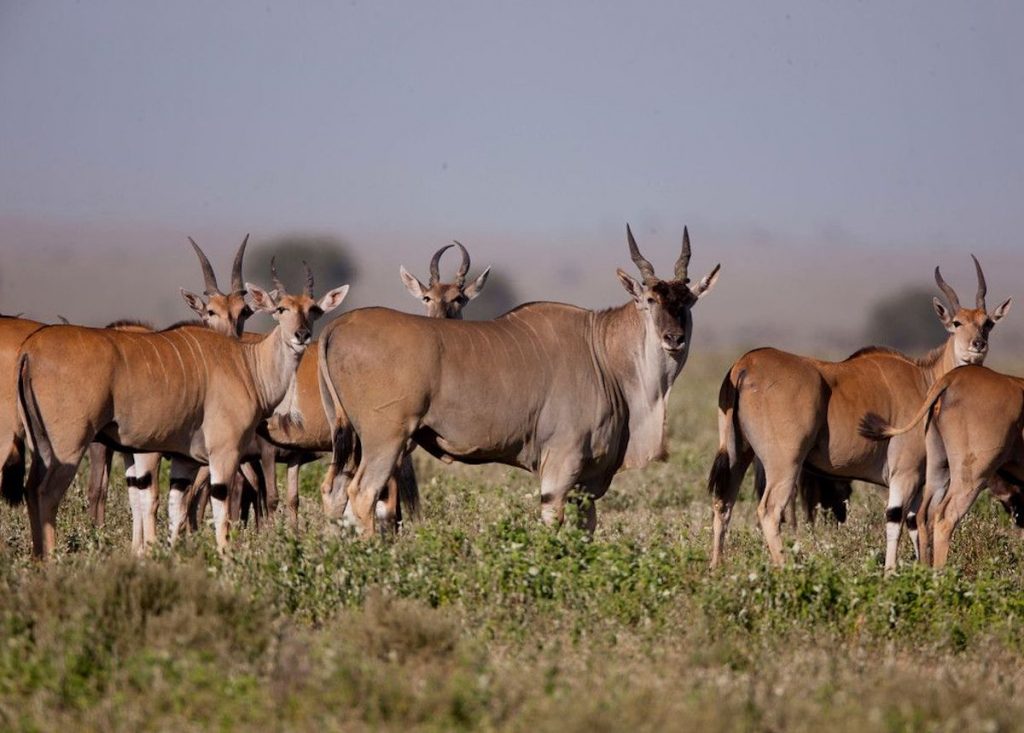
Also known as Mendes antelope, the Addax has a characteristic white color covering its entire coat of far except within its face. Generally this antelope is considered to be highly threatened with the biggest threat to their population being illegal hunting as well as loss of their habitat to human activity. The females and males have characteristic horns that grow to approximately 3.5 feet in height with the male ones being longer. Unique about this specie is that they can survive without water for quite some time, and can obtain all the water they need for their survival from just the foliage they eat. It is for that reason that the Addax is sometimes referred to as a desert antelope.
African Oryx (Oryx leucoryx)
This African Oryx is considered to be one of the most endangered species within the Serengeti ecosystem with reports that they are just a few of these antelopes that can be seen on the Salei Plains. Some of the primary causes for the great reduction in population of the Oryx is the myths that the local people had about them among which are: that the blood of this antelope treats snake bites while others believed that its flesh offers extraordinary power. It is for these reasons that the animals were being illegally hunted across the continent making it to be listed by IUCN as one of the vulnerable wildlife species.
Read also 20 Top animal species found in the Serengeti National Park in Tanzania, Africa.
Bushbucks (Tragelaphus scriptus)
This very elusive antelope which is hard to pin down is characterized with white spots on the most mobile body-parts which are its ears and legs. They live in solitary within sections of the park that have thick vegetation cover which makes it extremely hard to see them.
Dik –dik Antelope
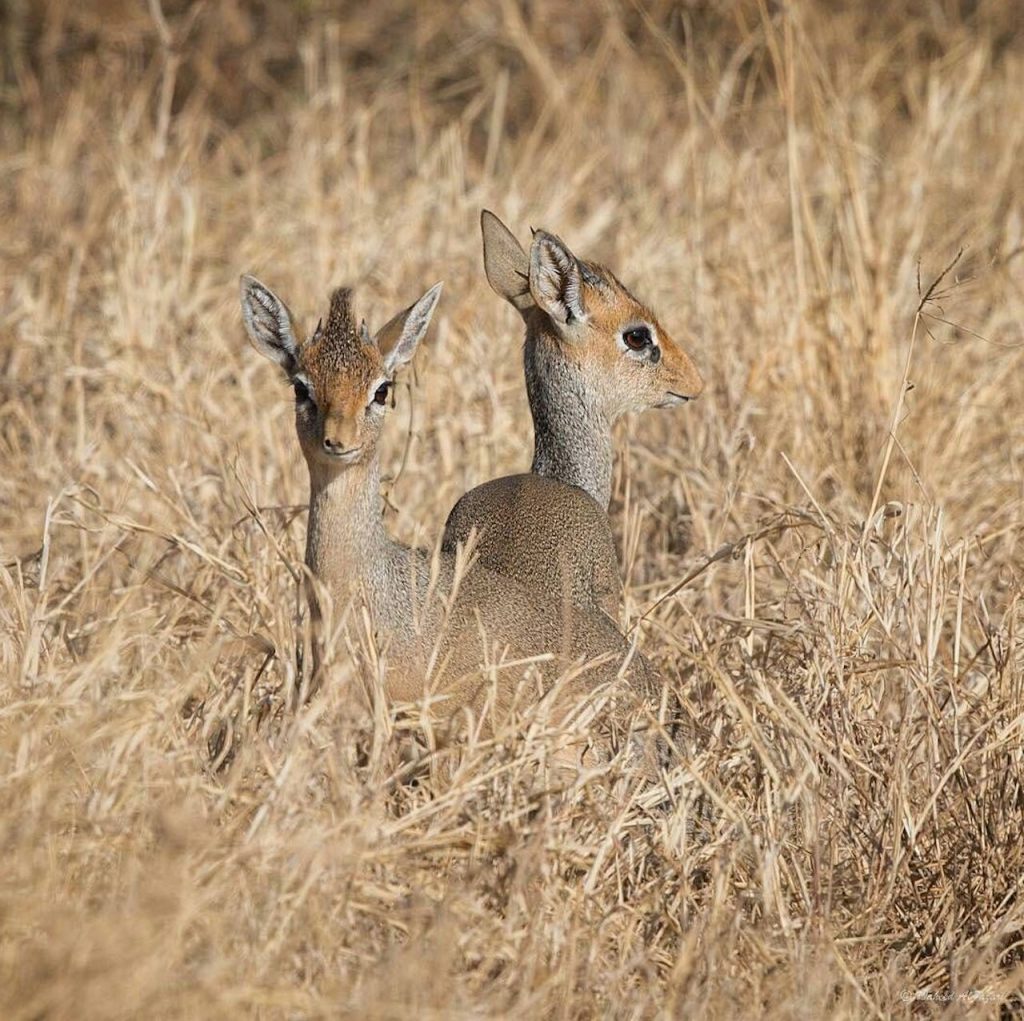
Across the entire Serengeti ecosystem this is the smallest type of antelope and perhaps the cutest and it’s alleged that they were named after the unique noise they make when they make an alarm. Unique about the dik-dik antelope is that they are monogamous and when they get a mate they keep them for life. These antelopes are numerous across the park and can best be seen within areas having a thick vegetation cover.
Eland Antelope (Taurotragus Oryx)
Considered to be the largest type of antelope in the whole of Serengeti the eland is shockingly a very fast animal. In addition, it is one of the very difficult animal species to be photographed considering the fact that they fear vehicles very much (unlike those within the renowned Ngorongoro Crater that have grown familiar to the large number of vehicles in the crater). This Eland can best be seen within the northern woodlands of the Serengeti especially during the dry season and then in the wet season they can be sighted in the Eastern and southern plains of the park. At shoulder height the Eland can grow up to 1.5 meters and weigh about 900 kilograms when fully matured. Their coats have a characteristic black strip running along their back while 2 to 15 white colored stripes horizontally run on its coats which indeed make it a beautiful antelope.
Grant’s gazelle (Nanger ganti)
These really resemble their counterparts – the Thomson’s gazelles, and they are much larger with darker coats that enable them to withstand dry climatic conditions. The Grant’s gazelles can easily be seen within the southern and Eastern plains of Serengeti during the dry season and unique about them is that they can go without water for some time.
Hartebeest ( Alcelaphus buselaphus)
The hartebeest are pretty similar in physical appearance to the Topi and are related to them. They however do not have any black far on their faces.
If you are planning to travel to Tanzania for safari, you may be interested in our published packages on our Top 8 Tanzania safari and Zanzibar packages.
Impala (Aepycerous melampus)
The Impala is among the commonest and widely spread type of antelopes within Serengeti National Park, and in fact many holidaymakers have testified that it is the most elegant of all antelopes. The males have horns while the female do not.
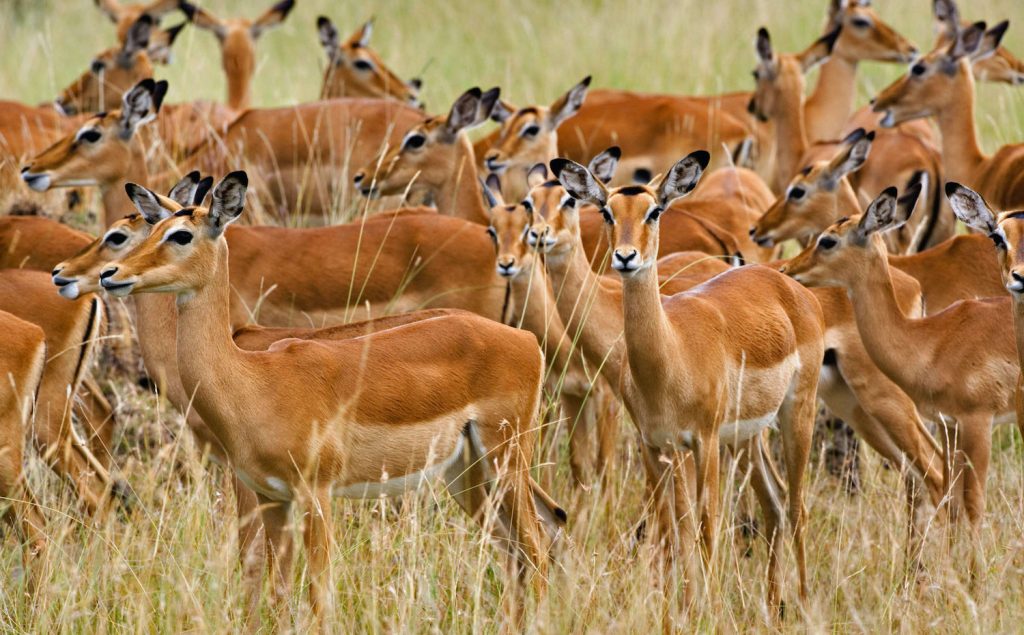
They are generally small in size with black spots on their feet as well as a white distinctive spot right above their eyes. during your game drives on a Tanzania Safari you may be lucky to spot one of the predators chasing an impala especially in the early mornings.
Klipspringer (Oreotragus oreotragus)
The Klipspringer is normally found up on the granite kopjes within the Serengeti woodlands, and this antelope is gifted with the capability of hopping from one rock to another. Their bodies are covered with a thick rough coat. Immediately after the Lobo airstrip found in the northern part of the Serengeti, you will be able to enjoy views of the klipspringer in the surrounding kopjes.
Lesser kudu (Tragelaphus imberbis)
Although rarely seen the Lesser Kudu is one of the most beautiful antelopes. It can be seen within the southwestern plains of the Serengeti. A fully mature lesser kudu can grow to a weight of 100kg for the male and 70kg for the female. Today the total estimated population of this type of antelope across the globe is 118000.
Oribi (Ourebia ourebi)
These can only be seen within the northern part of the Serengeti. They have a characteristic reddish brown coat while the lower part of their body is covered with white colored fur. Just below each ear is a black spot or sweat gland from which this antelope can easily be identified. The oribi antelope has the least distribution across the Serengeti.
Reedbuck (redunca)
These are frequently seen within the tall grass areas close to the different water sources in the central part of the Serengeti. They are easily startled and can only be hunted by the super fast predators a reason that best explains why they are a delicacy to the leopards found within the Seronera Valley. Check out some of our Tanzania safari tours that include the Serengeti National Park.
Steenbok (Raphicerus campestris)
This is another yet small type of antelope found within the Serengeti and it can easily be identified by its characteristic black ‘tear-drop’ like spot found just above its black nose. They can easily be seen near the Bologonja springs found in northern Serengeti as well as in the woodlands around kusuni in south western Serengeti.
Thomson’s gazelle (Eudorcas thomsoni)
It is estimated that there are more than 500,000 gazelles in the Serengeti which makes it the second most prevalent type of antelopes in this National Park. During the dry season these can easily be spotted in the Central and western parts of the Serengeti with the best sighting in central Serengeti. Once the rains begin they migrate to the Eastern and southern areas of the park with the best sightings being at the Barafu and Gol kopjes. This type of antelope was named after one of the early explorers Joseph Thompson.
Topi (Damaliscus lunatus jimela)
The topi is one of the commonly seen antelope species in the Serengeti easily spotted within the grassy plains and woodlands. Generally these antelopes are big in size. They have ringed horns, elongated heads and a hump at the end of their neck. The topi can easily be seen within the plains in eastern Serengeti
Waterbuck (kobus ellipsiprymnus)
This type of antelope has a thick coat and normally lives close to the water sources with best sightings within the woodlands of the Serengeti. They can best be seen near the Moru kopjes and across the central part of Serengeti. Because of their thick coats covered in far, they are not a delicacy to many predators and are normally only hunted by lions that are extremely hungry.
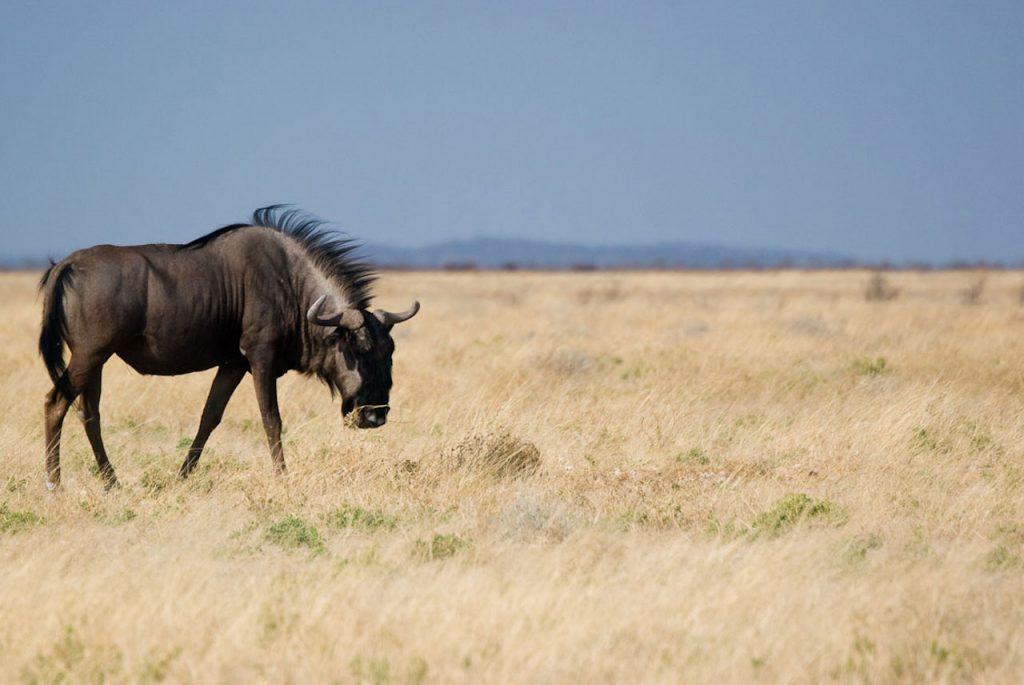
Wildebeests (Connochaetes taurinus)
This is the most common as well as the largest number of antelopes in the Serengeti and it is estimated that there are more than 1 million wildebeests in the Park. Every year the Serengeti hosts the annual wildebeest migration which is one of the most spectacular natural wildlife movements that includes about 1.5 million wildebeests which migrate in search for water and fresh pastures. The wildebeests live in large herds together with other types of antelopes plus zebras.
Best time to see Antelopes in Serengeti National Park
The best time to see the antelopes of Serengeti is during the dry season which runs from January and February as well as from June to October. During that time of the year, the vegetation has dried up and is thinner offering clearer views of the animals. In fact during this time many antelopes gather around the remaining water sources to quench their thirst so there are chances of seeing them more. Another good way to see these antelopes is during the Wildebeest Migration Safaris. These tours will get you a follow the millions of animals as they migrate through the vast Serengeti plains.

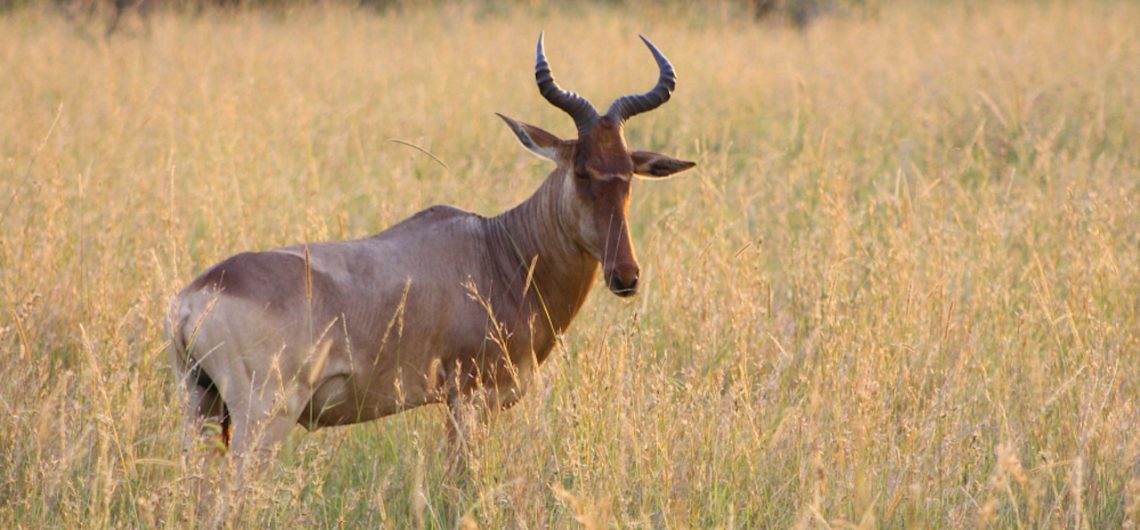
Comments